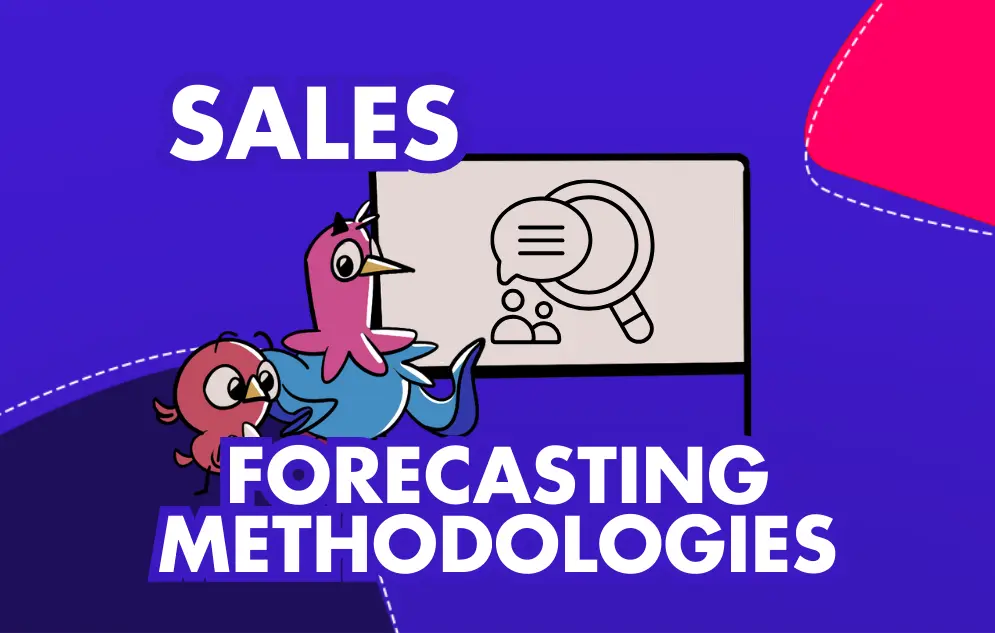Sales methodologies are important for startups because they provide a structured approach to selling that can increase efficiency and effectiveness. By understanding and implementing different sales methodologies, startups can better understand their customers' needs and provide tailored solutions.
Are you frustrated by the lack of transparency in your sales process? Do you find yourself wondering why things happen, both good and bad? If so, you're not alone. Many startup founders like you are looking to improve their sales performance and gain a better understanding of their sales process.
Sales methodologies play a crucial role in achieving these goals. They provide a structured approach to selling that helps sales teams effectively engage with prospects, understand their needs, and close deals. By implementing the right sales methodology, you can improve your team's sales performance and drive revenue growth.
By understanding these different sales methodologies, you can choose the one that aligns best with your business objectives and customer needs. Whether you're looking to scale your revenue or equip your sales team with the necessary skills and strategies, this guide will provide you with the insights you need to make informed decisions.
So, if you're ready to take your sales performance to the next level, let's dive into the world of sales methodologies and discover how they can transform your startup's sales process.

Sales Methodologies
Sales methodologies are important for startups because they provide a structured approach to selling that can increase efficiency and effectiveness. By understanding and implementing different sales methodologies, startups can better understand their customers' needs and provide tailored solutions.
In this article, we're going to cover 17 of the most common sales methodologies out there designed to elevate your sales organization.
- BANT
- Challenger Sale
- Command of the Sale
- Conceptual Selling
- Consultative Selling
- Customer Centric Selling
- Gap Selling
- Inbound Selling
- MEDDIC
- N.E.A.T. Selling
- SNAP Selling
- Social Selling
- Solution Selling
- SPIN Selling
- The Sandler Selling System
- Target Account Selling
- Value Selling
BANT
Definition
BANT stands for Budget, Authority, Need, and Timeline. This sales methodology is designed to help sales professionals qualify prospects in terms of their potential to become customers. The BANT framework assesses a prospect's:
- Budget: Their financial capacity to purchase.
- Authority: The decision-making power of the contact or whether they can influence the decision-maker.
- Need: The specific requirement or problem that the product or service can address.
- Timeline: The timeframe within which they plan to purchase or implement a solution.
Example
Let's take a sales representative from a software company contacting a potential client. The representative would use BANT as follows:
- Budget: The representative inquires about the client's budget for new software solutions to understand if the client can afford their product.
- Authority: The representative confirms whether the person they are speaking to is the decision-maker or if they need to involve someone else who has the authority to make purchasing decisions.
- Need: The conversation then shifts to discussing the client's current challenges and how the software can resolve specific issues they are facing.
- Timeline: Finally, the representative asks when the client is looking to implement a new software solution, ensuring their sales efforts align with the client's planning and urgency.
If the client aligns well with the BANT criteria, the representative would proceed with the sales process, considering this prospect as qualified and worth the investment of time and resources.
Challenger Sale
Definition
The Challenger Sale methodology is based on the idea of challenging a customer's current way of thinking and introducing a new perspective that highlights a product's or service's unique value. Salespeople using this approach are typically assertive, informed, and focused on teaching customers something new about their business needs. The goal is to disrupt the customer's existing beliefs or processes and show how a different approach can lead to better results.
Example
A sales representative from a software company specializing in data analytics approaches a retail business that relies on traditional market research methods. The salesperson challenges the retailer's approach by presenting data and insights on how advanced analytics can more accurately predict consumer trends and behaviors. They demonstrate how their software can provide deeper, actionable insights, leading to more effective marketing strategies and increased sales. The aim is to shift the retailer's mindset towards embracing more sophisticated data-driven decision-making.
Command of the Sale
Definition
Command of the Sale is a sales methodology that emphasizes the importance of the salesperson taking control and guiding the sales process. This approach involves understanding the customer's buying process, identifying key stakeholders, and managing each stage of the sale with confidence and expertise. It's about maintaining momentum, ensuring alignment with the customer's needs, and steering the conversation towards a successful close.
Example
A sales representative from a high-end commercial kitchen equipment company is dealing with a restaurant chain looking to upgrade its kitchens.
- The salesperson first establishes a clear understanding of the chain’s specific requirements and decision-making process.
- They then present a tailored proposal, highlighting how their equipment meets the chain's needs for efficiency, quality, and long-term value.
- Throughout the process, the salesperson keeps in regular contact with key stakeholders, addresses concerns proactively, and adapts their strategy to align with the client's evolving needs.
- They effectively manage the timeline and milestones, ensuring the decision-making process stays on track and leading to a successful sale.
Conceptual Selling
Definition
Conceptual Selling is a methodology that focuses on customer-centric interactions, emphasizing the importance of understanding the customer's concept of a product or service before making a sales pitch. It involves identifying and addressing the customer's key concepts and concerns, and aligning the sales approach to these. The goal is to create a mutual understanding of what constitutes value for the customer, moving beyond just features and benefits.
Example
A salesperson from a company offering renewable energy solutions meets with a potential business client. Instead of immediately pitching their solar panels, the salesperson first engages in a discussion to understand the client's perceptions and concerns about renewable energy. They explore the client's long-term energy goals, cost concerns, and environmental considerations. Then, they tailor their approach to show how their solar energy solutions align with these concepts, emphasizing aspects like long-term cost savings, environmental impact, and alignment with the client’s corporate sustainability goals.
Consultative Selling
Definition
Consultative Selling is a sales approach where the salesperson acts more as a consultant than a traditional sales representative. This methodology focuses on understanding the customer's unique challenges and needs before offering solutions. The salesperson builds a relationship based on trust, demonstrating expertise, and prioritizing the customer's interests. The key elements involve active listening, asking insightful questions, thoroughly understanding the customer's business, and customizing solutions that specifically address the customer's problems or goals.
Example
Consider a salesperson at a company that sells marketing software. Using the Consultative Selling approach, the salesperson would:
- Understand the Customer's Business: Begin by learning about the customer's current marketing strategies, objectives, and challenges. This might involve asking detailed questions about their target audience, current marketing channels, and performance metrics.
- Identify Specific Needs: Through active listening and analysis, the salesperson identifies that the customer is struggling with lead generation and campaign tracking.
- Offer Tailored Solutions: Instead of just promoting the software's features, the salesperson explains how specific functionalities of the software can help in generating more leads and provides a better way to track campaign effectiveness, directly addressing the customer's pain points.
- Build a Relationship: Throughout the interaction, the salesperson maintains a consultative posture, offering advice, sharing insights, and even recommending other non-competing tools or strategies that might help the customer.
- Close the Sale: Once the customer sees the value in the software as a solution to their specific needs, the salesperson moves towards closing the sale, emphasizing ongoing support and the long-term benefits of the partnership.
In this scenario, the sale is not just about the product; it's about providing a comprehensive solution to the customer's unique challenges and establishing a trust-based relationship.
Customer Centric Selling
Definition
Customer Centric Selling is a sales methodology that focuses on understanding and responding to the needs, objectives, and interests of the customer. It emphasizes building long-term customer relationships and tailoring the sales approach to meet the specific needs of each customer. The methodology advocates for a consultative sales process, where the salesperson acts more as a trusted advisor than a traditional sales representative.
Example
A salesperson at a company selling marketing software engages with a small business owner. Instead of immediately presenting the software features, the salesperson first seeks to understand the business's current marketing challenges and goals. They discuss the business's target audience, budget constraints, and desired outcomes. Using this information, the salesperson then recommends specific features of the marketing software that align with the business owner's goals, such as cost-effective campaign management tools and analytics capabilities that are particularly suited to small businesses. The focus is on how the software can help achieve the customer's specific marketing objectives.
Gap Selling
Definition
Gap Selling is a methodology focused on identifying and addressing the 'gap' between the current state and the desired future state of a customer's situation. It involves understanding the customer's existing problems, challenges, and goals, and then demonstrating how your product or service can bridge this gap. The key is to highlight the tangible benefits and improvements that the customer will experience by adopting the solution.
Example
A salesperson from an office automation solutions company meets with a business struggling with inefficient document management and slow internal processes.
- First, they discuss the current state: the business's manual, time-consuming document handling processes.
- Then, they explore the desired state: a streamlined, efficient, and digital document management system.
- The salesperson presents their automation software, emphasizing how it will close this gap by speeding up processes, reducing errors, and improving overall efficiency.
- They focus on the tangible benefits such as time and cost savings, and improved employee productivity, showing a clear path from the current to the desired state.
Inbound Selling
Definition
Inbound Selling focuses on attracting customers through educational and engaging content rather than direct sales tactics. It aligns with the buyer's journey, targeting customers who have shown interest in the company's offerings. The approach is consultative, leveraging online content to guide sales interactions.
Example
A company selling eco-friendly office cleaning products creates informative online content about sustainable living. Interested individuals download a related guide from their website and provide contact details. The sales team then reaches out, offering personalized advice and product suggestions based on the prospect's specific interests in eco-friendly practices.
MEDDIC
Definition
MEDDIC is a sales methodology that stands for Metrics, Economic Buyer, Decision Criteria, Decision Process, Identify Pain, and Champion. It's a thorough qualification process focusing on:
- Metrics: Quantifiable measures of success.
- Economic Buyer: The person with financial authority.
- Decision Criteria: Factors that influence the buyer's decision.
- Decision Process: The steps in the buying decision.
- Identify Pain: Understanding the customer's challenges.
- Champion: Someone within the customer's organization who advocates for your solution.
Example
A salesperson from a cloud computing company is engaging with a large corporation.
- Metrics: They start by discussing how cloud computing can improve efficiency and reduce costs, using specific performance metrics.
- Economic Buyer: They identify and engage with the senior executive responsible for IT budgeting.
- Decision Criteria: The salesperson discovers the corporation prioritizes security and scalability in technology solutions.
- Decision Process: They learn about the corporation's formal review and approval steps for new IT solutions.
- Identify Pain: The salesperson uncovers issues with the corporation's current IT infrastructure, such as high maintenance costs and lack of scalability.
- Champion: They connect with an IT manager who understands and supports the benefits of moving to cloud computing, who can advocate for their solution internally.
N.E.A.T. Selling System
Definition
The NEAT Selling System is a sales methodology that focuses on identifying and addressing the core needs of a prospect. NEAT stands for:
- Needs: Understanding the customer's primary needs.
- Economic Impact: Assessing the economic impact of these needs not being met.
- Access to Authority: Identifying the decision-makers.
- Timeline: Establishing the timeline for implementing a solution.
Example
A sales representative from a company specializing in business efficiency software meets with a potential client.
- Needs: They start by asking detailed questions to understand the client's challenges with operational inefficiency.
- Economic Impact: The salesperson discusses how these inefficiencies are costing the company in terms of time and money.
- Access to Authority: They confirm that they are speaking with the key decision-makers or identify who in the organization has the authority to make purchasing decisions.
- Timeline: The discussion then shifts to when the client is looking to implement a solution, aligning the sales process with the client's urgency and planning schedule.
SNAP Selling
Definition
SNAP Selling is a methodology designed for selling to busy, decision-making customers in today's fast-paced environment. It's based on four principles:
- Simple: Keep solutions and processes simple and easy to understand.
- Invaluable: Demonstrate clear value and become an invaluable resource to the customer.
- Align: Align your solutions with the customer's needs and objectives.
- Priority: Focus on making the decision process a priority for the customer.
Example
A salesperson for a cloud storage service is dealing with a busy client who manages a large team and is overwhelmed with data management issues.
- Simple: The salesperson presents the cloud storage solution in a straightforward manner, highlighting ease of use and simple integration with existing systems.
- Invaluable: They showcase how this service has helped similar businesses streamline data management, becoming an essential tool for efficiency.
- Align: The salesperson aligns the service with the client's need for secure, accessible, and scalable data storage.
- Priority: They emphasize the urgent need for robust data management in today’s digital landscape, making it a priority for the client to act now to prevent data-related issues.
Social Selling
Definition
Social Selling is a methodology that leverages social media platforms to identify and engage with prospects. It involves using these platforms to research, connect, and interact with potential customers. The focus is on building relationships and establishing trust through online interactions, content sharing, and offering valuable insights, rather than direct selling.
Example
A salesperson in the B2B sector uses LinkedIn to identify potential clients in their industry. They share industry-related articles, comment on posts, and participate in group discussions to establish their expertise. They connect with a potential client by commenting insightfully on their post. Over time, they build a relationship through meaningful online interactions. When the client expresses a need that aligns with the salesperson's services, they take the conversation offline to discuss a potential collaboration.
Solution Selling
Definition
Solution Selling is a sales approach that focuses on identifying and solving a customer's specific problem with a tailored solution. It involves a deep understanding of the customer's needs and challenges, and then presenting a product or service as the solution to these issues. The emphasis is on the benefits and outcomes of the solution rather than the features of the product itself.
Example
A salesperson from a cybersecurity firm meets with a business that has recently experienced a data breach. The salesperson first seeks to understand the specific security challenges and vulnerabilities the business faces. They then present their cybersecurity software not just as a product, but as a comprehensive solution to enhance the business's data security, emphasizing how it can prevent future breaches and protect sensitive information. The focus is on the software's ability to solve the business's unique security challenges.
SPIN Selling
Definition
SPIN Selling is a methodology based on four types of questions: Situation, Problem, Implication, and Need-payoff. It's a customer-centric approach that guides the sales conversation through these stages.
- Situation Questions: Understand the customer's current situation.
- Problem Questions: Identify specific problems the customer faces.
- Implication Questions: Explore the consequences of these problems.
- Need-payoff Questions: Highlight the benefits of solving these problems.
Example
A salesperson for a business software solution might approach a potential client as follows:
- Situation: They ask about the client's current software tools and processes.
- Problem: They delve into issues the client is facing with these tools, such as inefficiency or lack of features.
- Implication: The salesperson then questions the impact of these problems on the client's business, like lost revenue or decreased productivity.
- Need-payoff: Finally, they ask questions that lead the client to see the benefits of their solution, such as how much time and resources could be saved with more efficient software.
The Sandler Selling System
Definition
The Sandler Selling System, also sometimes referred to as the Sandler Sales Methodology, emphasizes a balanced, consultative approach, focusing on both the buyer's and seller's needs. It encourages salespeople to act as advisors, asking questions to identify the prospect's problems and determining whether their offering is a good fit. The system is based on the principles of mutual respect and honest communication, avoiding high-pressure tactics. It stresses the importance of qualifying prospects early in the sales process and encourages salespeople to uncover the true reasons behind a prospect's interest.
Example
A sales representative from a software company is in talks with a potential client. Instead of pushing the product immediately, the salesperson engages in a dialogue to understand the client's current software challenges. They ask probing questions to uncover deeper issues like user adoption challenges or integration concerns. Upon realizing that the client needs a more user-friendly solution, the salesperson presents their software, focusing on ease of use and seamless integration with existing systems. Throughout the conversation, the salesperson maintains an advisory stance, encouraging the client to consider whether the solution truly meets their needs.
Target Account Selling
Definition
Target Account Selling (TAS) is a strategic sales methodology focused on targeting and winning specific key accounts. It involves thorough research and analysis to identify high-value prospects and tailor sales strategies to these accounts. TAS requires understanding the target company's business, its decision-makers, and their specific needs, to effectively align the sales approach with their unique requirements and challenges.
Example
A sales team at a software company specializing in enterprise resource planning (ERP) systems identifies a large manufacturing company as a high-value target. They research the company's current ERP system, business processes, and pain points. The team then develops a tailored presentation for the company's key decision-makers, highlighting how their ERP solution can specifically address the identified challenges, improve operational efficiency, and contribute to business growth. The sales approach is customized to this account, focusing on building a relationship with the decision-makers and positioning their product as the optimal solution for the company’s specific needs.
Value Selling
Definition
Value Selling focuses on understanding and reinforcing the unique value a product or service brings to a customer. It involves identifying the customer's key challenges and demonstrating how the product's features specifically address these issues, leading to tangible benefits. The goal is to make the customer see the product as an investment rather than an expense.
Example
A salesperson for a cloud-based project management tool meets with a potential client struggling with team collaboration and project tracking. The salesperson demonstrates how their tool uniquely addresses these issues with real-time collaboration features and comprehensive project tracking capabilities, emphasizing the time and cost savings the client will experience. The focus is on showing the tool's value in solving the client's specific problems, leading to improved team efficiency.

Conclusion
Understanding different sales methodologies is crucial for founders looking to improve their team's sales performance. By implementing the right sales training program, founders can gain transparency in their sales process and equip their B2B sales team with the necessary skills and strategies to increase sales revenue and market share. If you'd like to get some first-hand feedback on your sales process, book a growth audit with our CEO Kyle Vamvouris. You can also grab our large collection of tools and templates below!
{{download-all}}

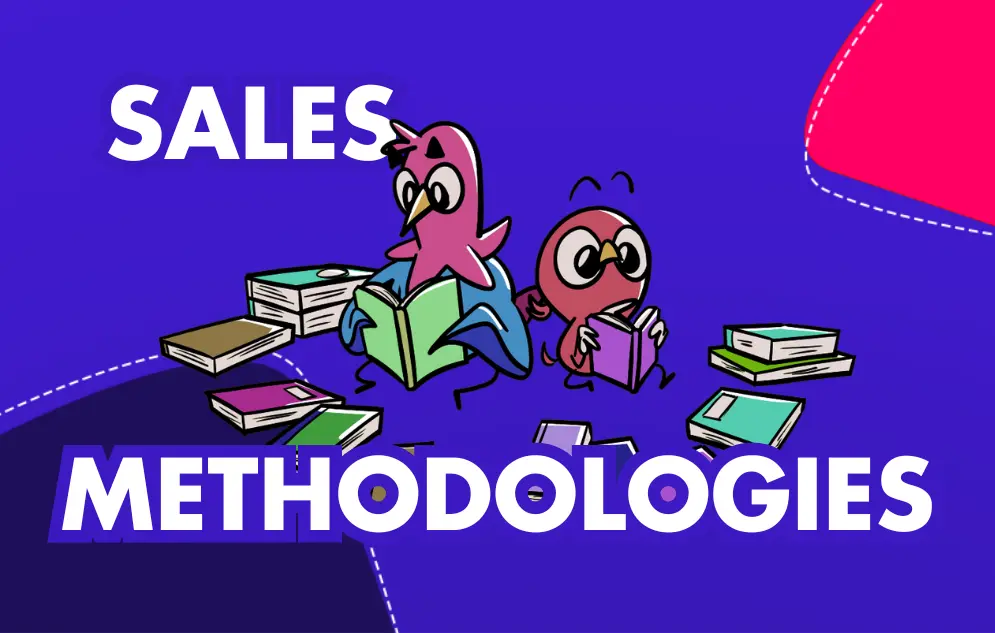
.webp)
.webp)
.png)
.webp)



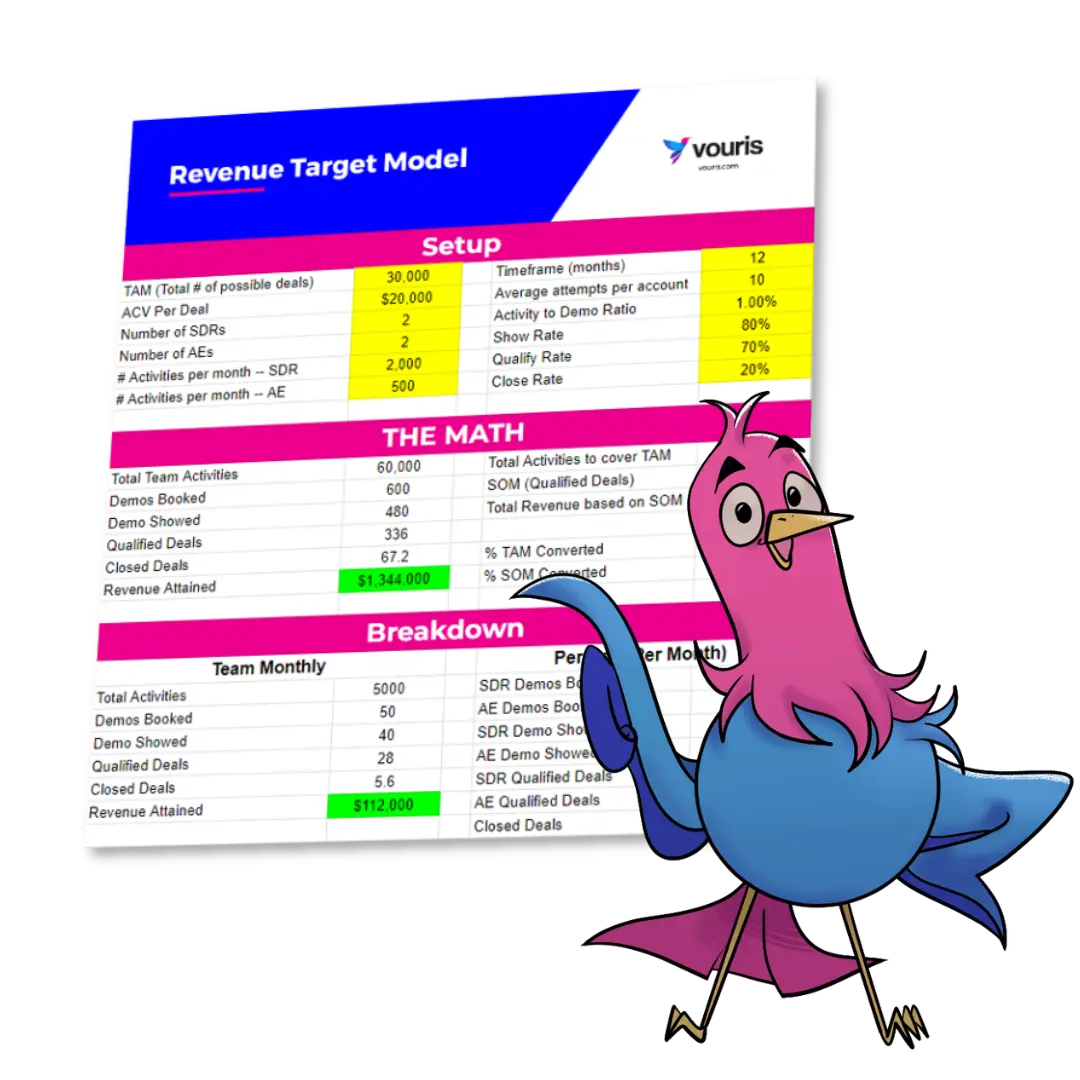


.webp)

.webp)
.webp)
.webp)

.webp)

.webp)
.webp)
.png)
.png)
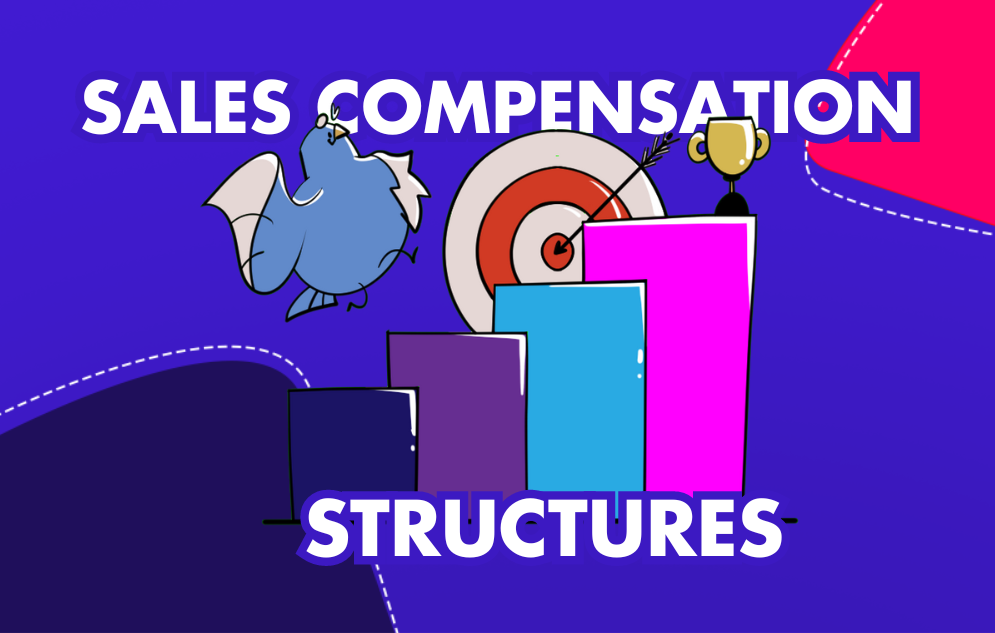



.png)


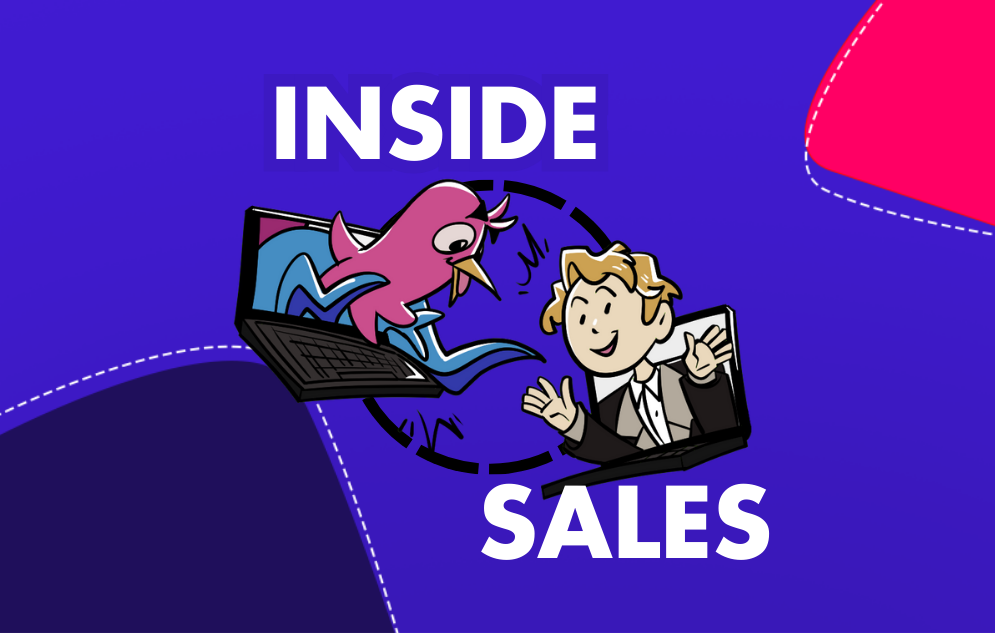



.webp)
